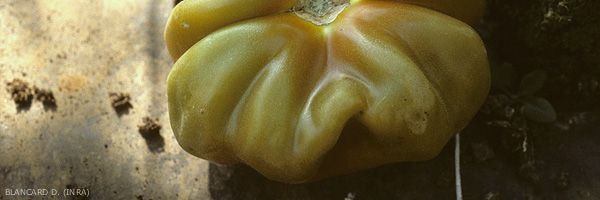
Faceted fruits
( puffiness )
( puffiness )
- Symptoms on fruits
Fruits deformed, ribbed, angular, more or less flat at the level of the "equatorial" zone (figure 1) . Several facets can be observed, the number of which varies according to that of the locular cavities present in the fruit.
The interior of the fruits is more or less hollowed out. The locular cavities are partially empty, with little frost and seeds (Figure 2). The fruits are therefore lighter and hollow.
The last fruits of the bunches are the most affected.
- Origin of damage
Disturbances in flowering, pollination, then fruit set and seed development, in relation to several parameters:
- short days, insufficient light and too low temperatures;
- poorly adapted fertilization, too rich in nitrogen and phosphate or too low in potassium;
- conductivities that are too low;
- the use of a fruit set regulator.
Vigorous varieties with fleshy fruits are more sensitive to this physiological condition, especially in early crops at the start of production.
- How to cure it
Ensure maximum comfort to the plants during the flowering period of the first bouquets of early crops.
The climate
- Maintain fairly large day / night temperature differences, especially when the plants are very vigorous.
- Avoid keeping night temperature setpoints too low.
- Ensure optimal humidity in the shelters, especially not excessive in order to promote plant transpiration and the release of pollen.
Ferti-irrigation
- Control irrigation in order to prevent excess, especially during periods of low evapotranspiration.
- Avoid excess nitrogen, especially nitrates, and ensure balanced potassium and phosphate fertilization.
The plant and its behavior
- Grow varieties that are not very sensitive.
- Reduce the planting density if the plants are very vegetative.
- Regulate the first bunches of 4 or 5 fruits.
- Make sure the bumblebees are active enough.
- Master the use of fruit set regulators.





